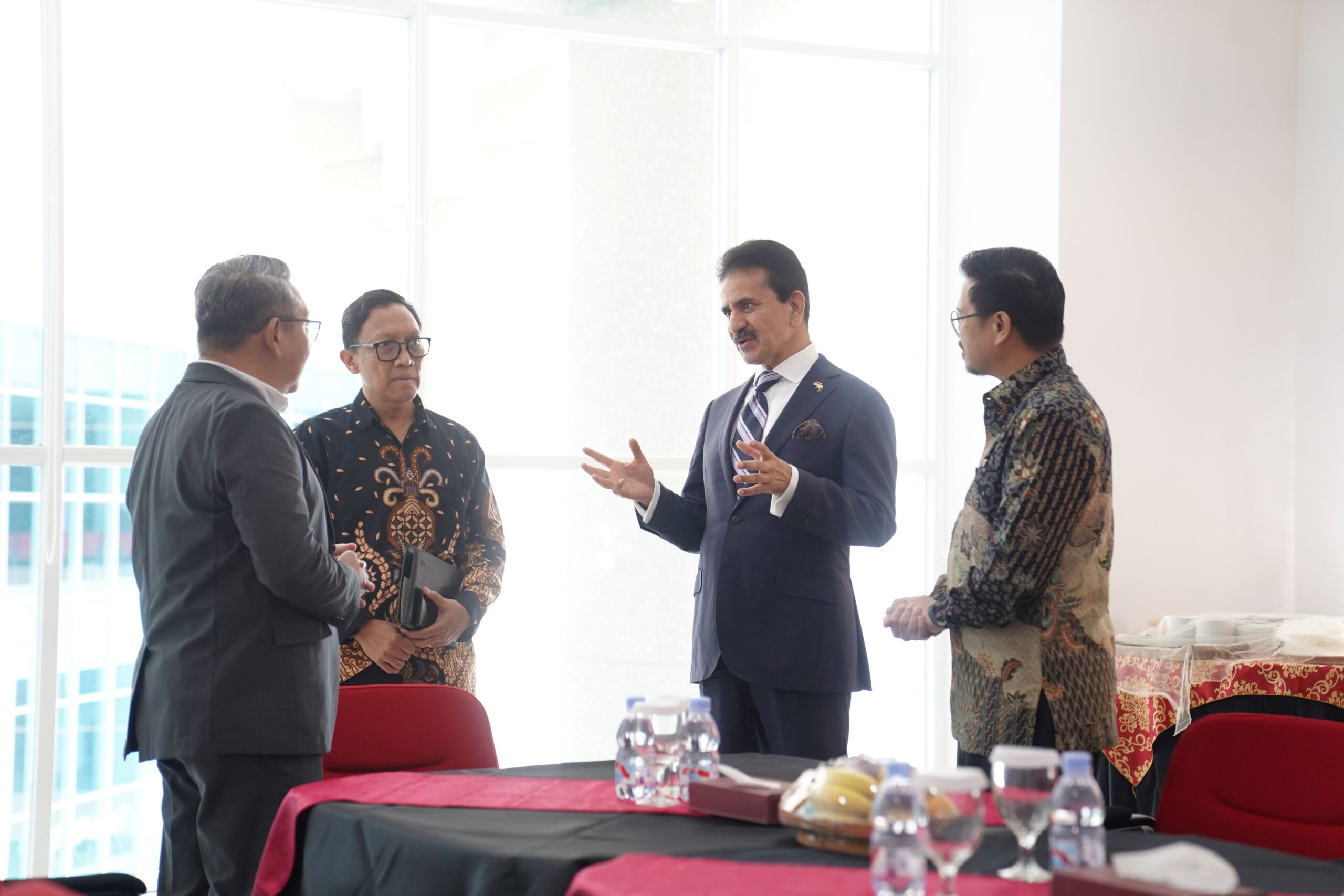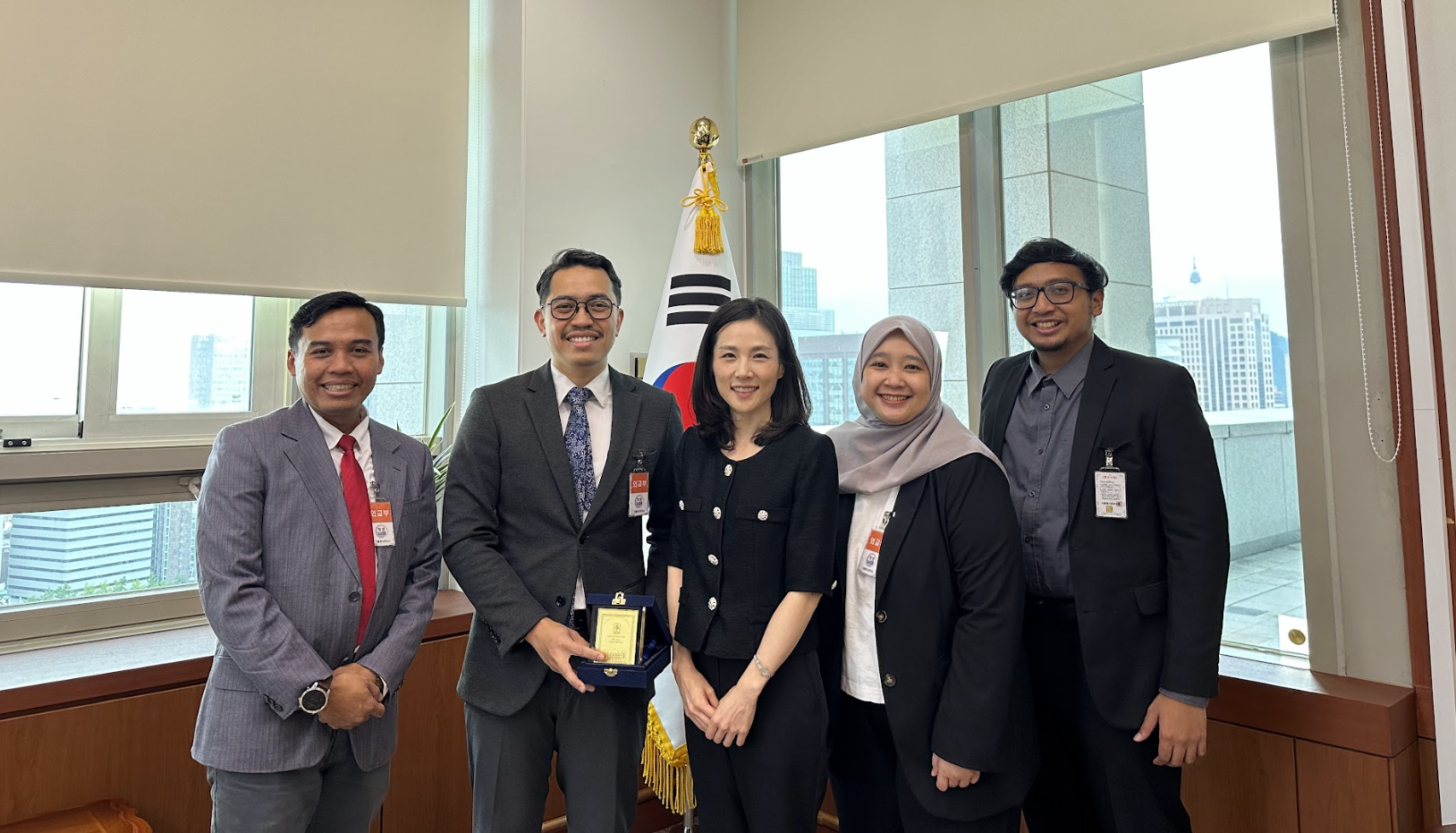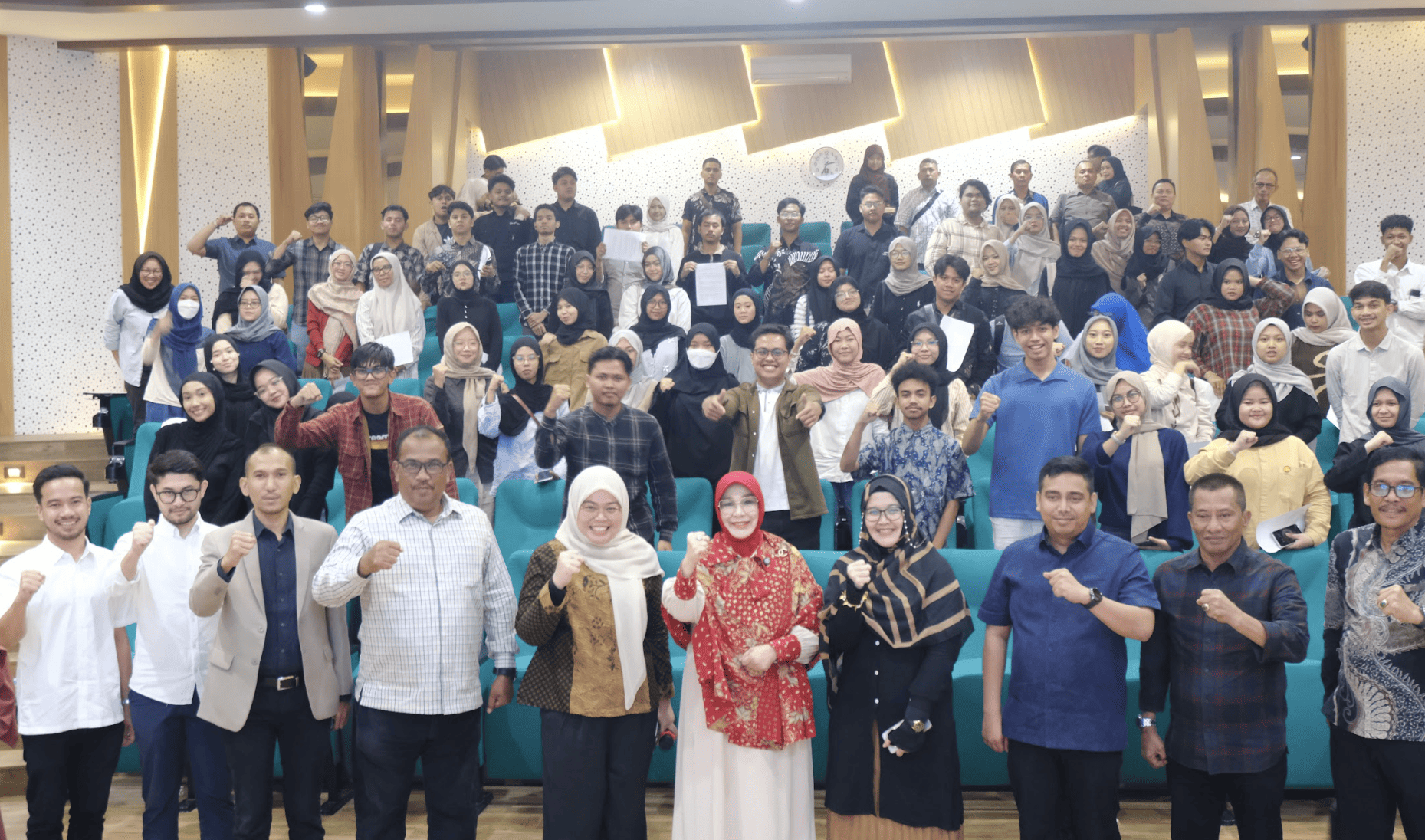Exploring New Horizons: Turkey Considered As A Heart City In International Relation
Written by Rahendha Alfahreza Wildhan

Why Global Mobility Initiative To Turkey?
The Global Mobility Initiative (GMI) Go To Turkey is a program that aims to improve students’ academic, cultural, and social skills, and help them develop a broader global perspective. Through the GMI program, students can learn about new cultures and traditions, increase tolerance, understanding, and appreciation for cultural differences. In an increasingly interconnected world, fostering cross-cultural understanding and collaboration is Essential.
Recognizing the importance of global competence and the need for intercultural experiences!
These intercultural skills are essential for international relations majors because they allow students to interact with people from different cultural backgrounds. and in this GMI program, students will create valuable international networks for future careers. This network can open doors to international employment opportunities in the future, which is very relevant for international relations majors. By leveraging resources and expertise across sectors, this initiative can offer a variety of mobility opportunities and ensure sustainability and scalability in the long term.
In conclusion, the Global Mobility Initiative is a bold step towards creating a more interconnected, informed, and inclusive global community. By empowering students with the knowledge, skills, and experiences needed to navigate the complexities of international relations, GMI aspires to shape a new generation of global leaders committed to building a more peaceful, prosperous, and sustainable world.

Exploring the Wonders of Hagia Sophia.
Hagia Sophia is an unforgettable experience for me!. When entering this magnificent building, we are greeted by high ceilings and beautiful mosaics that tell of its long history. This makes me goosebumps because behind all this there is its own story.
This building has the largest domed structure in the world with a dome reaching more than 30 meters. In addition, Hagia Sophia has undergone three constructions on the same site, with the current structure completed in 537 AD. Starting from a church, becoming a mosque, to a museum, every corner of the place holds many stories. The most impressive moment was when standing in the upper gallery, looking at the view of Sultan Ahmed and I felt a deep spiritual aura. I continued to have exciting discussions with friends about history and culture to add to the fun. and luckily I was able to visit a very beautiful place. The Hagia Sophia is not just a destination, but a journey in time that brings us closer to world heritage!

A Detailed Combination Picture of the Calligraphy and Mosaic in Hagia Sophia.
The collaboration between calligraphy and mosaic in Hagia Sophia is an important element that adds to the artistic and beauty of the interior of this building.
The mosaics are incredible works of art that capture the building’s cultural and historical diversity. Images of Jesus, the Virgin Mary, and other saints are among the many religious themes found in the mosaics, the majority of which are Byzantine in heritage.

The Explanation of Mosaic of Deesis
The images of Jesus, the Virgin Mary, and other saints are among the many religious subjects represented. Their representations of emperors and empresses illustrate the transition between Islam and Christianity, and numerous mosaics feature significant religious personalities.
After being transformed from church into a mosque, the walls and dome are decorated with wonderful Arabic calligraphy that features passages from the Al-quran and significant Islamic names, like the eight calligraphy panels created in the 19th century by Qadi Askar Mustafa Izzet Efendi that show the names of Allah, Muhammad, and several of the Prophet’s companions. And each calligraphy has a diameter around 7.5 meters and written in thuluth jail script.

A Turkish Culinary Adventure: A Taste of Friendship at the Dinner Table
We began the journey by experiencing different culinary delights, including famous Turkish kebap, smoked grilled meat, and meat seasoned with specific spices. For us, each bite has a distinct flavour that takes us in Turkish customs and flavours. In order to experience a variety of foods there, we usually barter and divide the turkey food with other friends.

Eating Famous Dessert With Friends: Kunafe
Next, we decided to visit a tiny restaurant called Mihli, which is close to Hagia Sofia Hamami. We got Kunafe, one of the most popular sweets there. The filo dough known as kataifi is used to make Kunafe. This dough takes the shape of short, white strands of shredded phyllo pastry that are split into vermicelli-like strands.
Fun Facts About Kunafe: Why makes Turkish Kunafe a symbol of friendship?
Turkish künefe has become a symbol of friendship for several reasons related to the tradition and cultural significance of communal eating in Turkey. Kunafe is usually served in large portions and shared. Eating künefe together reinforces the sense of sharing and strengthens social bonds. Eating kunafe in Turkey is often done in a warm and formal setting, similar to a communal meal ceremony.

Tasting the Sweetness of Turkey’s Typical Desserts at Galata Tower: Bonding Friendship Through Flavor in Turkiye
This reflects the importance of family and togetherness in Turkish culture. Additionally, as a religious and cultural tradition Kunafe is frequently offered as a dessert following iftar, the evening meal following fasting, during the month of Ramadan. This strengthens social unity and familial ties by giving the custom of communal eating a powerful religious component.

A Visit To Anitkabir: Bridge A Friendship Diplomacy And History
We had the chance to go to Anitkabir, which is located in Ankara, Turkey. Anıtkabir is known as a “Memorial Tomb” because of its role as the final resting place of Mustafa Kemal Atatürk, the man who founded the Republic of Turkey. Furthermore, Anıtkabir serves as a representation of patriotism and reverence for Atatürk’s contributions to the development of contemporary Turkey. Anıtkabir is a significant historical place that represents Turkish cultural values and history. It also serves as the scene of numerous state ceremonies and memorials. The anniversary of Atatürk’s death is celebrated annually on November 10 at Anıtkabir, which attracts a lot of tourists and serves as the focal point of state events.
Anitkabir As A Symbol Of International Relations?
In the historical context, the first president of Indonesia, Soekarno, and the seventh president, Jokowi visited Mustafa Kemal Atatürk’s grave, Anıtkabir, as a sign of their close international ties and as a respect to the founder of the Republic of Turkey. Anitkakabir often serves as a venue for official ceremonies and state visits, creating opportunities for countries to strengthen diplomatic ties and bilateral cooperation. Through historical moments such as the visits of Soekarno and Jokowi, Anitkabir has grown into a location that encourages international friendship and collaboration. Turkey’s connections to the rest of the globe are strengthened by each visit, which builds a bridge across cultures and history.

Discovering the Grand Bazaar’s Wonders and Uniqueness: An Istanbul Shopping Place and Cultural Paradise
The world’s oldest and biggest market is the Grand Bazaar. Every area of the bazaar is a wonder, with more than 4,000 stores selling one-of-a-kind goods, ranging from jewellery to ceramics. I can sense the rich Turkish culture in the romantic and welcoming atmosphere of the big bazaar.
Experience authentic Turkish coffee and tea while engaging in exciting bargaining.
The Grand Bazaar is not only a place to shop, but also a window to understand the fascinating history and traditions of Istanbul.

Also, the Grand Bazaar passageways are constructed using wood and brick, and they have been decorated with traditional Turkish ornamentation. This place was founded in 1455 by Sultan Mehmed II after the conquest of Constantinople, therefore the Grand Bazaar has developed into an important trading center for more than five centuries.

The “Heart of the City” in Istanbul
Usually refers to Taksim Square, which is located in the city’s European side’s Beyoğlu district. Taksim Square connects several areas of the city and acts as a key meeting spot and transportation hub. Furthermore, Taksim Square has a long history and represents the social and cultural dynamism of Istanbul. The Republic Monument, located in the middle of the square, honours the Republic of Turkey’s establishment in 1923 and serves as a significant gathering spot for locals and tourists to mark a variety of occasions.
Taksim Square
which is located in the Beyoğlu district on the European side of Istanbul. Taksim Square connects several areas of the city and functions as a key meeting spot and transportation hub. Furthermore, Taksim Square has a long history and represents the social and cultural dynamism of Istanbul. The Republic Monument, located in the middle of the square, honours the Republic of Turkey’s establishment in 1923 and serves as a significant gathering spot for locals and tourists to mark a variety of occasions.
What makes Istanbul’s Heart of the City an international connection?
- Millions of tourists from many nations gather at Taksim Square, encouraging cross-cultural exchanges and enhancing ties between nations by exchanging traditions and ideas.
- Taksim’s significance in the context of world politics is demonstrated by the Republic Monument in the square, which honours the establishment of the Republic of Turkey and is frequently the site of formal gatherings and diplomatic conferences.
- Taksim Square is a key transportation hub in Istanbul that links the city’s various neighbourhoods and makes it simple for visitors and foreign delegations to get around, opening doors to Turkish cultural experiences.
- The dynamics of world politics and Turkey’s place in them are reflected in Taksim Square’s reputation as a site for protests and social movements associated with global problems.

The Bosphorus Cruise is a representation of international relations.
First, the Bosphorus strait is a crucial meeting place for international trade and culture since it divides the continents of Europe and Asia. A strait cruise offers tourists a singular sensation of simultaneously feeling near two continents. Additionally, Bosphorus Cruise draws visitors from throughout the globe, fostering cross-cultural exchanges that improve global ties by sharing customs and information. Views of historic structures and stunning architecture that showcase a rich cultural legacy often a topic of conversation in the context of international relations are also available to guests during the cruise.
Equally important, many international events such as conferences and celebrations are held on cruise ships on the Bosphorus, reinforcing the role of the strait in diplomacy and cooperation between countries. Thus, Bosphorus Cruise not only offers a fascinating tourist experience but also serves as a platform for strengthening international relations.






